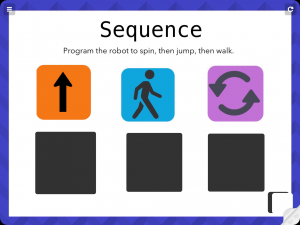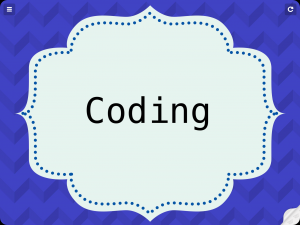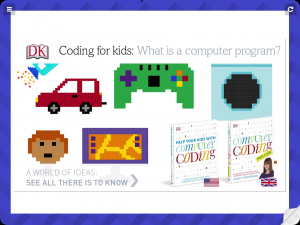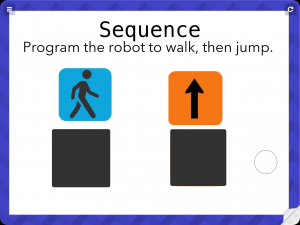Posted on July 19, 2016
Introducing Coding and Algorithms to Preps and Year 1s
At the end of last term I taught some introductory lessons to our youngest students to help them to understand the concept of “coding” at a very basic level.

The students had previously had some experience with Kodable and really enjoyed playing this with this app, but I wanted to introduce the term “coding” and to help the students make explicit links to the games they were playing and the idea of how computers work using code.
According the the Digital Technologies curriculum, by the end of Year 2, students should be able to design solutions to simple problems using a sequence of steps and decisions:
Follow, describe and represent a sequence of steps and decisions (algorithms) needed to solve simple problems (ACTDIP004)
I began the lesson by playing the game “Simon says” with the students. We discussed the way in which the players only follow the instructions when they are presented in a special way, and that they must do exactly what they are told to do or they are “out”. I linked this to the idea that computers can follow instructions that are given in a special way, and that they must follow the instructions exactly.
I challenged the students to consider who is smarter: a person or a computer? The students moved to different sides of the mat depending on their thoughts and then we considered different opinions about who was smarter. In the end, we decided that people were smarter because they could think for themselves and that computers could only follow the instructions they had been given.
We watched a short video on YouTube that introduced coding in reasonably simple terms.
Next, I used an activity I had created in TinyTap to conduct a whole class activity with students acting as “coders” and “robots”. I had the “coders” interact with my iPad to give the instructions and the rest of the class were able to see what was happening as the image was projected onto the screen. The students simply dragged buttons with symbols representing actions such as “walk”, “jump” and “spin” into the correct sequence. Then the “robot” acted out the sequence. The students really enjoyed this game.
To finish off the lesson, the students all had the chance to be “coders” by playing the Kodable game. I reiterated that when they were playing this game they were creating instructions for their “fuzzy” to follow, just like the coders had created instructions for the robots in our other game.
To build on this experience, I plan to use the BeeBots with the students so they can have more practice in using sequences of steps.






Recent Comments